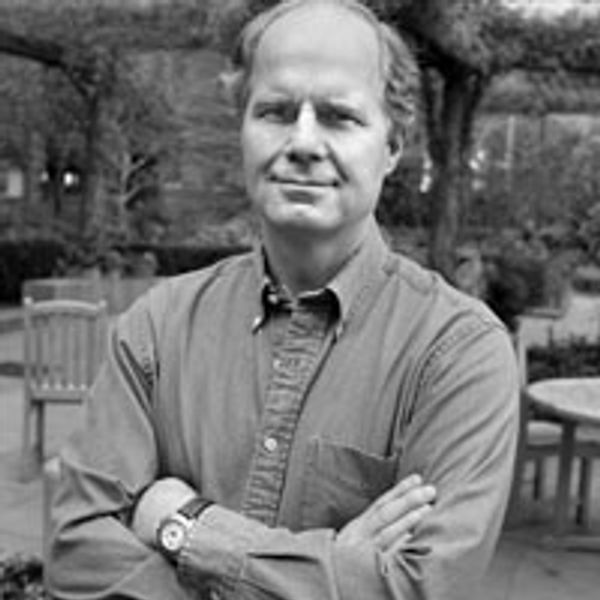Malak Mattar, Peaceful Reading (detail), 2021, acrylic on canvas
reading a patient
The physician hears the patient tell a story, scans the body for signs, and renders an interpretation. The scientist conceives this as an act of deciphering. Like a child with a secret decoder ring, the diagnostician sees little red dots on the patient’s shins and infers that there is a problem with platelets, blood cells that are involved in blood clotting. The dots in themselves are unimportant, except insofar as they mean platelet dysfunction.
(But to a seventeen-year-old girl on the eve of the senior prom, the dots might be very important. Or: to a Londoner of the 1660s, the dots might be construed as a harbinger of the plague then ravaging the city, a matter of mortal consequence. To a “primitive,” the visitation of a malevolent spirit.)
Interpretation in general can be conceived crudely as an act of decoding in which A means X, B means Y, etc. In this simple conception, often applied (wrongly, I think) to Medieval exegesis, the story level of A and B is in itself unimportant, of little value, useful only as a (perhaps entertaining, perhaps subterfugal) device for transporting the reader/interpreter to the higher plane of X and Y.* The entire value lies at the level of X and Y, the meaning. In this view, the purpose and joy of interpretation consist in abandoning the surface-level markers and getting to their higher significance.
~
It is possible to practice medicine this way. The scientists govern the medical schools and teach that diagnosis is decoding. Furthermore, there is only one code and one system of decoding. The dots mean platelets, not the balance of yin and yang, not the flux of humors, emphatically not spirits.
The medical student learns to rush away from the patient’s story and the patient’s body and transport them to the level of medical idea. Here, they enter a closed discussion among the physicians and scientists. The patient no longer speaks, demoted into the material substrate of the doctor talk.
This action runs the risk of committing violence against the patient. The patient remains very attached to his or her story and body and does not want to abandon them.** In addition, the patient, the family, and the group (ethnic, cultural, social) may apply entirely different rules of interpretation. These latter, which can seem arbitrary or superstitious to the scientific physician, may for the patient be fortified with centuries of validation. The conflict between the two views can have tragic consequences.†
~
The medical scientist believes that truth consists in a correspondence between statement and fact, between an assertion and reality. The poet shifts the focus from statement and assertion to utterance and suggestion. Scientific method should bring us ever closer and closer to things as they are, to the single real world; while poetic method, a collaboration between the poet and the reader, creates fields of interpretation without any presumption of a definitive single reading, or of a single real world that the reading approximates.
Poetic method is untroubled by contradiction and embraces multiple simultaneous meanings. (There are meanings, not the meaning.) Scientific method cannot tolerate contradiction. Aristotle taught that a proposition is false if it implies A and not-A, and Einstein famously remarked that no amount of experimentation could prove his theories correct, while a single observation could prove them wrong. Baudelaire felt otherwise.
~
The tools of the poet are association, symbol, memory, assonance and dissonance; in contrast to those of the scholar or politician which are argument and syllogism.
Medicine needs science; no one would argue otherwise. But medicine also needs the poem, if it is to comprehend the total meanings of the suffering patient’s symptoms and signs.
*Susan Sontag, “Against interpretation,” in Against Interpretation and Other Essays.
**Or may not want to abandon them. One also meets patients who do wish to flee their stories or their bodies.
† As eloquently documented by Anne Fadiman in The Spirit Catches You and You Fall Down, the story of a Hmong girl with epilepsy and her collision with American medicine.

Charles Bardes is a physician who practices and teaches medicine in New York. His book-length prose poem, Diary of Our Fatal Illness (University of Chicago Press, Phoenix Poets, 2017), narrates the illness and death of an aged man. Other poems, essays, and ruminations have appeared in AGNI, Raritan, Ploughshares, The New England Journal of Medicine, and elsewhere. Pale Faces: The Masks of Anemia (Bellevue Literary Press, 2008) is an extended lyric essay that probes the mythological and cultural aspects of a common disease construct. In 2018 he received the Blackwell Prize in Writing, which “honors a writer who exhibits exceptional talent on the printed page, as well as meaningful social commitments on the public stage.” More info at charlesbardes.com. (updated 3/2020)
